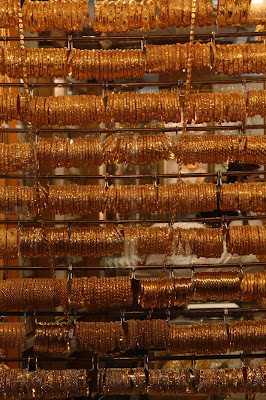
But Jordan did not come to my mind when I contemplate the possibility of visiting Karachi. What came to my mind first was the long list of attacks that Pakistan has been afflicted by in the last years and the constant headlines we are bombarded with which remind us daily why Pakistan is the most dangerous place on the planet (sorry Afghanistan, Chechnya, Colombia, Congo, Haiti, Iraq, Papua New Guinea, Somalia or other Yemen you seems to be down the ranking this year).

I have to admit that I was selfishly concern by my own security at first, but glad that I change my mind at last, and went "visiting" Karachi. "Visiting" is a big word to say going under strict private security from the hotel to one place and then back to it.

Let me just say that behind the headlines you have lines of people suffering for what's happening currently everyday in their life. These headlines seem to fuel the concern over a country which tries to manage a parallel and exponential growth in term of population and issues.

But these headlines usually do not mention the daily courage and strength Pakistanis people have to stand still every day and fight back to gain another inch of decency or pushing for another heart beat.

I won't try to throw any political analysis at you on the currently situation because I don't understand the causes, appreciate well enough the history in the region or measure the cultural bias and divergence that exist today in this part of the world.

And even thought I study hard and put my head around this problem, I will not be able in my entire lifetime to just grasp the size of the problem of the 6th most populated country of the planet, because what's currently happening is multifaceted, dangerous, and complicated.

But what can I through at you is few pictures and some travelling impressions during my quick stay in Karachi. I had a chance to be guided in my wonders around for few hours in the Sunday Market in Karachi the one close to the sea, looking at people, watching what they doing and seeing how difficult it is today to live in Karachi.

I saw color crossing black outfits, sunlight going through flying carpet hanging in the sky, coffee boy running around making a cent or two, smiles when the camera was pullout my pocket to steal a snap or two.

I saw rawness, fear and roughness in people eyes, without any age difference. Pakistan today is not a place in which you can growth naivety and kindness although people are practicing them every day in case they come back sooner than later. No, Karachi is a place full of real people having real concerns about how to survive a real life.

This contrast is even more daunting, cruel and mind blowing when you arrived like I did, from a city like Dubai, a city that is far away from real reality. This contrast within few hours of travel is just shaking but I am extremely glad I experience it.
What are you traveling for if it's not to change your references!





















